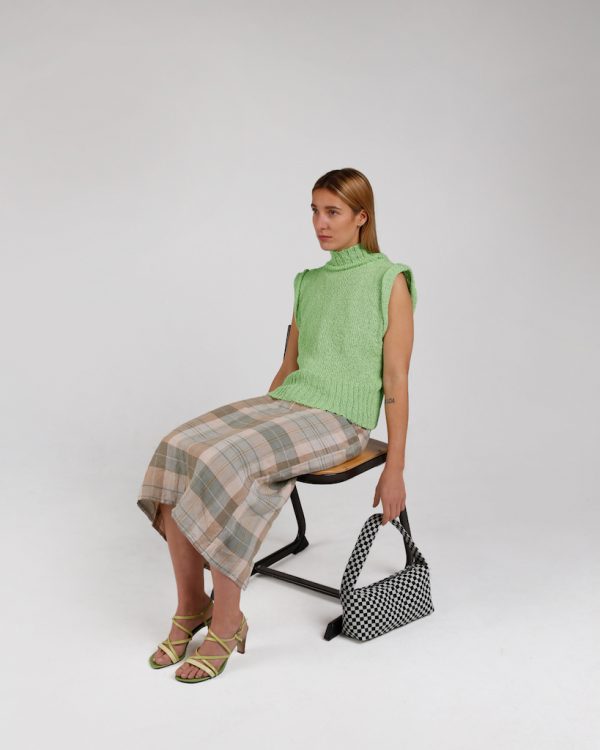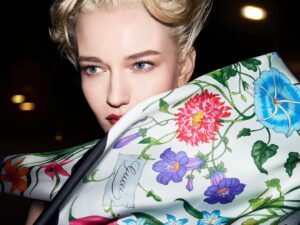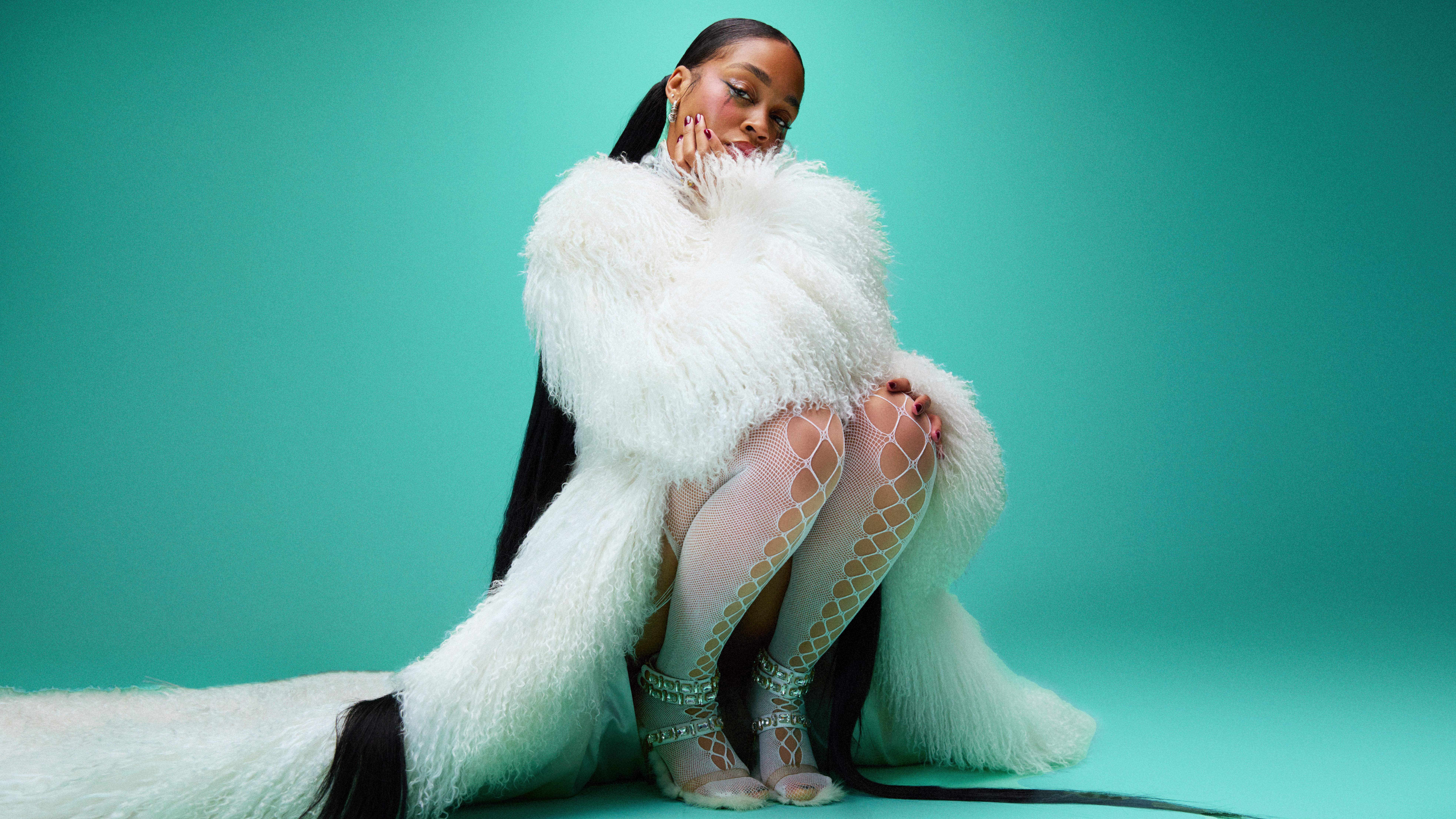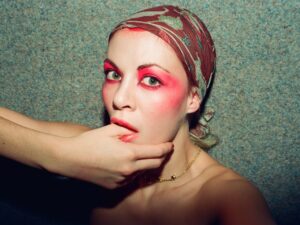If you only use deadstock, how commercially can you work? Does it limit the design process?
This concept limits the number of pieces but it enriches the design process enormously. However, since each product has to be treated individually, some processes take more time than the others, such as taking the product photos, or if some materials require special processing. Nevertheless, this way of working offers great possibilities and is also very attractive for us as designers because there are more diverse approaches. The focus is on individuality when the number of pieces is kept lower. That’s a lot of fun. It can also be more responsive to customer needs than a commercial label. For example, when we notice that a certain pattern or color (currently blue checked) works well, we can act quickly by specifically looking for materials in current demand, using them directly and being able to offer them at the next drop.
Which other sustainable aspects do you pay attention to?
When cutting, we make sure to produce as little scraps of fabric as possible in order to use the material efficiently. This is easy to implement thanks to the rectangular cut pieces. If we are able to get hold of larger quantities of a material, we can sometimes also offer bags as MADE TO ORDER. This way the customer’s product appreciation increases and it also promotes the product life cycle. In general, our processes allow us to respond to customer demand and avoids production volumes that are too large and too wasteful.
You recently expanded your collection with knitwear. Anything else you would you like to try out?
Knitting opens up completely new, sustainable ways by using leftover yarn and knitting all parts in shape. This means that there are no cuttings left – just a few remaining threads that can easily be used for packaging or to be further processed in something else. A knitted surface is also easily repairable. In general, we want to expand the product range for spring and summer without losing our focus on bags. We do this because it’s exciting to see how all Joana Christina products come together in new combinations and styles. In addition, new products can be combined with existing ones, which supports the basic idea of the label.
How important is Instagram for smaller labels like yours?
Instagram offers the possibility of great reach and of “being discovered” directly by the customers. Instagram is a media through which content can be distributed quickly and easily. We also hope that our work will inspire others. The trend to support small designers and labels is also supported by Instagram, where we can communicate directly with our customer base. Instagram is also a good means of querying and measuring demand and can be easily built on.




